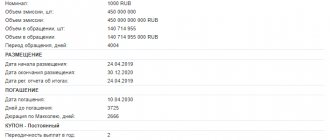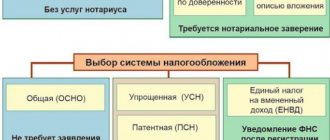When opening or developing a business, not every beginner is able to invest the necessary funds into it. Most often, when implementing even the most promising and profitable projects, business owners are forced to sell personal property, turn to wealthy relatives or friends, and agree to obtain a bank loan on rather unfavorable terms.
Entrepreneurs who are experiencing difficulties in attracting financing may find useful information on how to receive money for a business from the state free of charge in 2020: today there are several types of financial assistance issued by various authorities, subject to the fulfillment of some simple requirements. The reasons why the authorities are paying attention to supporting small businesses are quite obvious:
- The newly created companies will produce goods that consumers need;
- An increase in the level of competition in the market will cause prices to decrease and quality to improve;
- New jobs will be created, which will lead to increased consumption;
- Business will contribute to the socio-economic development of the state.
Priority sectors for subsidies
It is logical to assume that almost all programs to support small businesses in 2020 primarily involve obtaining benefits for the state. Therefore, regional authorities vested with appropriate powers are developing their own list of priority areas for each region.
Most often this list includes:
- Growing annual and perennial crops;
- Livestock and fish farming;
- Mixed types of agriculture;
- Processing of agricultural products;
- Forestry;
- Procurement of edible and medicinal plants;
- Food and beverage production;
- Manufacturing of clothing and other textile products;
- Production of chemicals and medicines;
- Production of electrical appliances, computers, electronics;
- Woodworking and furniture making;
- Collection, disposal or processing of waste;
- Activities in the field of housing and communal services;
- Transportation of goods and passengers;
- Development of tourism within the country;
- Providing employment for people with disabilities;
- Folk crafts of an artistic nature;
- Household services to the population.
There are also some restrictions that prevent business entities from participating in federal and local support programs. For example, companies operating in such areas as:
- Financial transactions, work with securities, trading on stock exchanges;
- All types of non-state insurance;
- Bookmaking activities, casinos, gambling;
- Production and sale of excisable goods;
- Extraction and sale of minerals.
How to write a business plan?
Preparing to participate in various assistance programs requires some effort, since only an entrepreneur who has submitted a well-founded and well-developed business plan to officials can receive money for a small business from the state. There are many options for the structure of this document, however, to increase the likelihood of subsidizing, it is better to use a template compiled by the relevant regional administration. The contents of such a plan include:
- Project summary. In this section you need to disclose the idea of the project and the mission of the enterprise, indicate the expected results of activities and the need for financing;
- Analysis of the market situation. Here you should analyze the consumption structure, estimate the expected sales volume, study the strategy of competitors;
- Income planning. It is necessary to consider the terms and conditions for the sale of goods, develop a pricing policy, and indicate sales channels;
- Production planning. This section describes production facilities and premises, lists the required resources, provides a list of equipment indicating characteristics, costs and suppliers;
- Organizational matters. Here it is necessary to present the organizational structure of the enterprise, develop a staffing table indicating salaries;
- Financial indicators. It is necessary to estimate the initial and current costs, indicate the sources of their research, determine the flow of funds, calculate the main indicators of economic efficiency - profitability, payback period, break-even point;
- Risk analysis. In this section, the main risks affecting the activities of the enterprise should be mentioned, as well as countermeasures should be presented;
- Conclusions. Here, based on previous calculations, it is necessary to prove that the business is profitable and the presented model is effective;
- Applications. To increase the likelihood of receiving a subsidy from the state for business in 2020, copies of contracts for the supply of raw materials and sales of products, rental of premises, and evidence of the availability of own funds in the applicant’s account should be attached to the plan.
Subsidy for starting a business
A newcomer taking his first steps on the entrepreneurial path can receive first aid from the state at the local employment service. The subsidy allocated by the Employment Center for starting a small business in 2020 is most often equivalent to the amount of the maximum annual unemployment benefit - 58,800 rubles. However, in areas with harsh climatic conditions, all payments are adjusted upward by applying a regional coefficient.
Who is the subsidy given to?
Not every entrepreneur can count on the allocation of money from the state to open a small business in 2020. To qualify for funding from the Employment Centre, an applicant must at least:
- Be an adult citizen of the Russian Federation;
- Officially be in unemployed status;
- Be registered with the central registration center for more than a month;
- Receive refusals from employers in the areas of the employment center.
Applicants for subsidies belonging to certain categories cannot receive money to start a business from the state. These include:
- Women on maternity leave;
- Applicants who have not reached the age of majority;
- Pensioners by age;
- Full-time students;
- Citizens who have entered into employment contracts with employers;
- Entrepreneurs who closed their previous business less than six months ago;
- Citizens with outstanding criminal records;
- Former employees dismissed by court decision;
- Former employees dismissed under article for violation of labor discipline;
- Unemployed people registered with the Employment Center who have refused at least two vacancies offered to them;
- Unemployed people who violate the rules and regulations of the Labor Center.
Procedure
As stated above, an entrepreneur must register with the employment service and obtain official unemployed status before receiving money to start a business.
When contacting the Control Center for the first time, the inspector will require:
- Passport indicating the place of registration of the citizen;
- Individual tax number;
- Pension insurance certificate;
- Work book;
- Document on higher or secondary specialized education;
- Certificate of income from previous place of work.
After completing the paperwork, the Center is obliged to offer the future entrepreneur several directions for interviews. They cannot be refused, however, when visiting potential employers, the applicant must convince them that he does not meet the requirements of the vacancy. Next, you can move on to the second stage:
- Consult with a Center employee about the availability of government assistance programs for starting a small business in 2020;
- Write an application for a subsidy to start your own business;
- Pass psychological testing;
- Develop a good business plan;
- Submit the plan and application for consideration to the Employment Center;
- Defend the project before the commission;
- Sign an agreement with the Center for Providing a subsidy for individual entrepreneurs in 2020;
- Register a company and open an account in the specified bank;
- Provide the registration certificate to the central control center and wait for the funds to be transferred.
The competition commission makes a decision within 10 days, paying attention to the compliance of the submitted business plans with certain criteria. To receive a high assessment of the project, it is necessary to separately emphasize that the entrepreneur:
- Goes to work on one of the priority areas;
- Creates jobs;
- Has a long-term lease agreement for production space;
- Previously worked in the chosen field;
- Implements an innovative and original idea;
- Offers a cost-effective and quick payback project;
- Has its own capital commensurate with the amount of the subsidy.
Purpose of financing
When studying how to get money for a business from the exchange, you should take into account that public funds can be spent exclusively for purposes related to the implementation of the project. These include:
- Creation of material and technical base;
- Purchase of machines and equipment;
- Construction or renovation of premises for organizing production;
- Purchase of raw materials or materials;
- Arrangement of additional workplaces;
- Purchase of licenses, patents, computer programs.
The entire procedure for receiving assistance for small businesses from the state in 2020 takes an average of 2–6 months. Three months after transferring funds to the entrepreneur’s account, you must submit to the Employment Center evidence of the intended use of the subsidy - receipts, invoices or acts. The recipient who has used the money for other purposes is obliged to return it voluntarily.
Other ways to get money for business
The three ways listed above are not the only ones. Is there some more:
- crowdfunding. This is a fundraiser for various projects using special online platforms. It works on the principle of donations. You need to post a presentation on the website and wait until the flow of money floods you with your head. Well, or it won’t flood, depending on your luck. In any case, you shouldn’t expect to raise serious money through crowdfunding;
- government grants. It’s quite a working method, but it’s not suitable for everyone. The government sponsors socially significant projects: agriculture, science, working with children, and so on. If you sell clothes online or open a barbershop, you can’t count on a grant. Even if you fall under the conditions of allocating money through a grant, get ready for several circles of bureaucracy;
- help from relatives. Remember the grandmother from the beginning of our article? This is exactly what it is. Businesses are often opened precisely thanks to such grandmothers, mothers and aunts. They won’t give you much, but when every penny is important, it can be very helpful.
Which source of capital to choose is up to you. And we recommend using each of them in a specific situation . For example, investments are good when starting a business or when scaling it. It is best to take out loans to replenish working capital and operating capital.
In general, experienced entrepreneurs advise not to be afraid to take other people’s money for business and recommend doing it, but wisely. Excessive debt load can ruin everything at the root, so you need to calculate everything a hundred times.
Subsidy for business development
A grant is free financial assistance allocated to entrepreneurs implementing innovative and profitable projects. In addition, the activities of the enterprise should benefit not only its owner, but also society as a whole - for example, create jobs, provide employment for people with disabilities, and improve the standard of living of ordinary citizens. Where should you go for support and where to get money from the state for business? Funds in the amount of up to 300 thousand rubles, compensating up to 80% of the costs of implementing the project, are allocated:
- Small Business Development Committee;
- Economic Development Committee;
- Industrial Policy Committee;
- Local authorities;
- Fund for Assistance to Small Business in the Scientific and Technical Field.
Who is the subsidy given to?
Subsidies for small businesses from the state in 2020 are intended to help mainly start-up entrepreneurs, and therefore only entities registered no more than a year ago can take part in the competition for the allocation of funds. When submitting an application, you must also ensure that:
- In terms of the number of employees and annual turnover, the company is classified as small;
- The enterprise produces goods or services in a priority area;
- The applicant has an unblemished credit history;
- The company pays taxes and contributions to the Pension Fund and the Compulsory Medical Insurance Fund on time;
- The applicant is ready to invest his money in the amount of 20–30% of the project cost.
When conducting a competitive selection for grants for small business development in 2020, some categories of applicants have advantages:
- Young professionals under 30 years of age;
- Discharged military personnel;
- Single parents under 35 years of age;
- Citizens supporting dependents;
- Citizens with disabilities;
- Entrepreneurs wishing to move to rural areas.
Procedure
When figuring out how to get help from the state for the development of small businesses in 2020, you need to start by clarifying the addresses of the authorities listed above, and then, using a personal appeal, find out the established requirements for applicants and the projects they propose. Then you should collect and submit to the selected SME Support Fund a package of documents, including:
- Application for attracting financing;
- Business plan with applications;
- Project cost estimate;
- Evidence of the availability of production facilities for the implementation of the project;
- Information on accounts receivable and payable;
- Agreements and draft contracts for project implementation;
- Required licenses and permits;
- For an LLC - orders for the appointment of a manager and chief accountant;
- Application form for an individual entrepreneur or director of an LLC;
- Confirmation of the availability of own funds (bank statement);
- Constituent documents (if available);
- Extract from the Unified State Register of Legal Entities or Unified State Register of Individual Entrepreneurs;
- Certificate of registration of individual entrepreneur or LLC;
- A certificate from the Federal Tax Service confirming that there are no overdue tax and insurance payments;
- Certificate of completion of training courses for entrepreneurs.
When selecting the winners, the commission also awards additional points to projects that meet the agreed upon criteria.
Plans that receive the highest marks are those that:
- It is expected that additional jobs will be created;
- Represented by applicants under 30 years of age;
- Refers to priority activities for the state;
- Applicants are expected to invest their own funds.
Purpose of financing
The 2020 state subsidy for small businesses can only be spent on the purposes specified in the business plan. The easiest way is to attract financing for the purchase of fixed assets, materials and raw materials, and the creation of new jobs. However, the grant cannot compensate for:
- Purchase of real estate, household appliances, furniture;
- Design, construction or renovation of buildings;
- Renting premises and paying salaries;
- Purchase of cars;
- Purchasing licenses, paying any fees to the SRO;
- Replenishment of the authorized capital;
- Production of advertising materials.
Get a loan from a bank
If you do not have money to develop your business or there is not enough money, contact the bank and get a loan. It will not be possible to finance the project completely, but borrowed funds can be used at the start.
Who is it suitable for?
The loan is available to individuals, as well as existing entrepreneurs and legal entities.
If you have a complete lack of business experience, you will not be able to get money to open a business from a bank. Each bank sets requirements for the minimum “experience” of doing business, usually from 1 to 2 years or more. Therefore, you can contact the bank as a private person and get a non-targeted cash loan.
The second option is to act in stages. Even with a minimal reserve of your own funds, you can register an individual entrepreneur or legal entity, draw up a business plan for development, start working with available resources, reach the break-even point, and only then apply to the bank for a loan.
A year is just enough to test your strength in practice, decide how much money you need for your business and where exactly to invest it. With already accumulated experience, applying for a loan is better than risking borrowed funds at the start.
The chances of getting a loan approved for a young company or a start-up entrepreneur will be increased by the support of special structures that are involved in business development in your region. It is easier to obtain borrowed funds from a bank with their help than by applying on your own.
Such organizations are controlled by the state and operate within the framework of federal entrepreneurship development programs. They do not issue money directly, but provide other financial support: they issue a guarantee, provide collateral and bank guarantees. With such security it is easier to get funds from the bank.
The Fund for Assistance in Lending to Small and Medium Businesses in St. Petersburg offers loan guarantees. There are similar organizations in other regions that help local businessmen.
Scheme for issuing a loan under the program of the Fund for Assistance in Lending to Small and Medium Businesses
To obtain the support of the Foundation, you need to prove the validity of your idea: submit an application, submit a business plan, with calculations of current and projected values of financial indicators.
If you pass the commission check and receive the go-ahead from the business support fund, the bank will readily issue a loan for the required amount.
When it's not worth trying
If there is absolutely no money to start a business and for operating expenses during the first year of operation, the bank will not issue you a loan for individual entrepreneurs and legal entities. According to the rules of most loan programs, you are required to contribute part of your own funds to the project in order to receive the rest of the amount from the bank. If you don’t start doing something on your own, the bank will not believe in you and will not approve the issuance of the requested amount.
There is no need to take out a loan when it is clear that business income is not enough to service obligations. If all the proceeds go to repay the debt with interest, then the loan will be refused. The bank will not finance a project where there is a high risk of non-repayment of money due to a lack of available funds, lack of reserves, small profits and high expenses.
It will not be possible to take money for a small business in this way if your company is declared bankrupt, there are overdue loans, debts or fines. The bank will check the credit history of the company and its founders. Your personal credit file and reputation influence the decision to issue a business loan. It is difficult to obtain borrowed funds with a damaged credit history and a high debt load.
If you already have obligations to banks, and even in arrears, it is almost impossible to take out a new loan. First, you need to resolve the issue with current debts and only then go for a new deal.
Conclusions about bank loans
- Credit is not available for a business from scratch: banks willingly finance experienced businessmen, so it is better to open a company with your own money, work for a certain time, and only then go for additional funds;
- The chances of getting a bank loan approved are higher if you issue a guarantee or obtain other guarantees from a business support fund (there are such organizations in every region);
- If you have a negative credit history, and your company has minimal financial results, inadequate calculations in the business plan and no own funds, the loan will not be issued;
- If it is difficult to get a business loan, you can get a loan as an individual and use the money to develop your business.
Subsidy for production modernization
Another type of government assistance that can attract the attention of more experienced entrepreneurs is subsidizing the modernization of technological lines, machines, units and other production equipment of enterprises. Using this grant, you can compensate up to half of confirmed expenses in the amount of up to 5 million rubles.
Who is the subsidy given to?
To apply and receive money for business development from the state, you need to make sure that:
- The applicant does not go through bankruptcy, closure or reorganization procedures;
- The company has no debts on tax and insurance payments;
- The entrepreneur pays wages to employees on time;
- The average salary in the company is higher than the minimum in the region;
- The cost of installed equipment has been paid in full;
- The entrepreneur did not participate in other similar government programs to support small businesses in 2020.
Existing rules for allocating grants for equipment modernization do not allow assistance to be provided to enterprises operating in the following areas:
- Manufacture and sale of excisable products;
- Mining and sales of mineral resources;
- Organizations of gambling and betting;
- Wholesale and retail trade;
- Financial management and insurance;
- Real estate transactions;
- Ensuring military security;
- Household production of goods for own consumption;
- Extraterritorial activities.
In addition, the recipient of a subsidy for the development of small businesses in 2020 cannot be a foreign resident or a Russian company in whose authorized capital the share of foreign investments exceeds half.
Procedure
To receive financial support for small businesses in 2020, the applicant must submit to the institution that distributes grants on a competitive basis a fairly voluminous package of documents:
Application for assistance. Attachments to the application, including:
- An applicant's application form containing the name of the LLC or the surname, first and patronymic of the individual entrepreneur, contact information, registration address, field of activity, salary of employees, number of jobs and amount of profit from the sale of its own products over the past three years;
- Indicators of economic activity - the amount of turnover, income and expenses, the amount of tax and insurance contributions to the Pension Fund, Compulsory Medical Insurance Fund, Social Insurance Fund;
- Indicators of the effectiveness of the use of subsidies to small businesses from the state in 2020 are the creation of additional jobs, growth in company profits and the average salary of employees.
Documentary evidence of expenses incurred:
- Direct agreement for the purchase of equipment;
- Transfer and acceptance certificate;
- Fixed asset asset registration card;
- Operating instructions for this equipment, technical passport;
- A document proving that the supplier is a manufacturer, dealer or distributor of this equipment;
- Financial documents related to the purchase and installation of the line - checks, invoices, payment orders, invoices.
Additional information requested by the Committee:
- A certificate from the tax office confirming that there are no overdue payments;
- Extract from the Unified State Register of Legal Entities or Unified State Register of Individual Entrepreneurs;
- Certificates from the Pension Fund and the Compulsory Medical Insurance Fund on timely payment of contributions.
This year, an entrepreneur is allowed to reimburse costs only under one contract concluded less than two years ago. When analyzing projects and selecting winners, the commission primarily takes into account:
- The ratio of the number of employed disabled people to the total number of employees;
- Innovative nature of the applicant’s activities;
- Implementation of measures to improve energy efficiency;
- Availability of contracts for the supply of own products;
- Creating jobs and increasing wages;
- Increasing profits from the sale of your own products.
The main indicator of the effectiveness of subsidizing small businesses in 2020 is the creation of at least one job when receiving 1–2 million rubles, or two or more new jobs when receiving more than 2 million rubles. Moreover, the applicant is expected to increase revenue from the sale of his own goods and increase employee salaries. If these performance indicators are not achieved, the state has the right to expect a refund of the grant.
Purpose of financing
Currently, only applicants who independently produce various goods can apply for subsidies for the modernization of an enterprise; equipment used for organizing wholesale or retail trade cannot be purchased at state expense. Before receiving money for a business, an entrepreneur must document to the competition commission that:
- The equipment is used in production;
- The purchased equipment is new;
- The supplier is the manufacturer or its official representative;
- The equipment belongs to the second and subsequent depreciation groups;
- The equipment is not purchased on lease.
Property acquired with state assistance cannot be sold, rented or leased, or provided for free use to third parties for at least three years.
Investments of third parties or organizations
Nowadays, any investment in a business is called an investment. The grandmother gave her grandson part of her savings to start her own business - that’s it, the grandmother is an investor. This is wrong. Investing begins when an investment agreement is signed between the parties.
In fact, there are a huge number of types of investments . We list the main ones:
- venture investments. This is when an individual, company or investment fund invests money in a startup. The risks here are enormous, but the potential profits can also be significant;
- investments in successful existing companies. In this case, the investor finances those businesses that have been operating successfully in the market for a long time. The income here is less, but there is practically no possibility of losing your money;
- investments in securities. These are investments in stocks, bonds and so on. Applies mainly to government agencies and large joint-stock companies;
- direct investment in fixed assets. In this case, the investor’s money is used to buy equipment, tools, vehicles, buildings and structures.
The types of investment can be listed endlessly. This is a huge business machine with a multi-billion dollar turnover that lives by its own laws. But no matter how the investor invests money in you, one thing is important: whether he becomes a co-owner of the company or not.
If an investor acquires a share in your business, then, in fact, this is no longer an investor, but a full participant in the project. He takes part in the meeting of founders, has the right to vote, and his data can be included in the charter. Such things are justified if we are talking about large amounts of investment comparable to the value of the business.
But there is a pitfall here. This is exactly the way businesses are squeezed out. Let's look at an example.
Let's say your entire project costs a million rubles. You invested this million. At one point, a wealthy founder comes along and offers to contribute 9 million to the project and become one of the founders. Of course, you agree without hesitation: with this money you can take your business to a higher level, it would be stupid to refuse.
What happens in the end: your share in the business is 10%, the share of the new founder is 90% . Who will dictate the terms in this situation? Obviously not you. At a certain stage, you may be excluded from participating in the project altogether - there are ways to do this. Usually they offer to sell a stake in the business and peacefully go ashore. An offer you can't refuse, as they said in one cult action movie.
Even if you stay on topic, the distribution of profits will clearly not be in your favor. Payments to founders are usually made in proportion to their shares in the authorized capital. In your case it's 10 percent. That is, for every ruble of net profit you will receive 10 kopecks, and the investor - 90 kopecks , if you count very roughly.
If the investor does not claim a share in your business, then everything is simpler. You remain the full owner and owner of the company, but are now required to share profits with those who invested money in you. The amounts and timing of dividend payments are determined by the investment agreement. You can pay money every month, year or quarter.
And the worst thing is that now it will always be like this. If a bank loan can be repaid and forgotten like a bad dream, then such a number will not work with an investor. Let's be honest: the main goal of an investor is to make as much money as possible from you . Preferably without doing anything. This is not a philanthropist who only dreams of helping your business. This is a businessman like you. And the main goal of any entrepreneur is profit.
Be that as it may, investing is extremely popular among both entrepreneurs and investors themselves. There are many advantages here:
- the opportunity to attract virtually unlimited funds. If a bank loan is limited by your ability to pay, then the investor can give as much as he sees fit;
- if things don't work out, the investor will lose his money, and you won't owe anything. But this is possible with a well-drafted investment agreement. Yes, the company’s property will be sold and divided among creditors, but you personally are not responsible to investors;
Where to find an investor:
- on Internet sites like all investors.ru. The resource operates on the principle of an exchange, where entrepreneurs look for investors, and those who want to invest money look for projects for investment;
- among acquaintances of successful businessmen. Use all channels: mailings, personal meetings, telephone conversations. You can find an investor at a seminar, forum or business conference;
- investors can find you themselves. Just like this: they will come and give you money. Many experienced players in this market have a trained eye and immediately figure out profitable projects. Perhaps this is just about you.
In general, investors are interested in promising, scalable projects, the cost of which can increase many times over. Today I invested money in one store, and tomorrow I will be a co-owner of a federal-scale chain. This is the main dream of any investor.
Subsidy for starting a farm
In 2020, not only the Entrepreneurship Development Committees, but also local branches of the Department of Agriculture are providing assistance to small businesses from the state. In this case, the applicants are farmers working in the agro-industrial sector. Beginning owners of peasant farms can compensate up to 90% of the costs of the projects they implement in the amount of:
- Up to 3 million rubles for organizing a family farm and breeding cattle;
- Up to 1.5 million rubles in all other cases.
Who is the subsidy given to?
To take part in the competitive selection, the entrepreneur must be the head of a peasant farm. In addition, additional requirements are imposed on the applicant’s personality and the enterprise he heads:
- Over the past three years, the applicant has not been engaged in other entrepreneurial activities and has not been a member or founder of any other commercial organizations other than his own peasant farm;
- The applicant has not previously received free of charge:
- Similar grants for the creation of a peasant farm or livestock farm;
- Subsidies from the Central Employment Center for organizing self-employment;
- Other types of assistance to entrepreneurs from the state in 2020.
- The peasant farm applying for the grant has existed for no more than 24 months;
- The creator of the peasant farm has the appropriate agricultural education, work experience of more than three years in the agro-industrial sector or a similar period of running private household plots;
- The peasant farm meets the criteria of a micro-enterprise (the number of employees is no more than 15 people, and the annual turnover does not exceed 120 million rubles);
- The applicant invests his own funds in the amount of more than 10% of the project cost;
- It is planned to create at least one job for every 500 thousand rubles of state subsidy;
- These jobs will be retained for the next five years;
- The peasant farm will also operate for at least five years after the grant is issued;
- The applicant lives or undertakes to move to this region;
- The peasant farm has no debts on taxes and insurance payments;
- The applicant can provide contracts for the supply of its own products for a total amount of 30 thousand rubles.
⏩ Video on the topic
Procedure
How to get money from the state for the development of small businesses in the agricultural industry in 2020? First of all, the entrepreneur must prepare and submit some documents to the relevant department of the Department:
- Application in the approved form;
- Passport indicating the place of registration of the citizen.
- One of the following documents confirming the applicant’s qualifications:
- Certificate of higher or secondary specialized education in agriculture;
- Certificate of additional education;
- Certificate of completion of agricultural courses;
- A certificate from the local administration stating that the applicant has been running his own farm for three years;
- An extract from the work record book confirming the presence of at least three years of work experience in a specialty related to agriculture.
- A business plan for opening, developing or modernizing a farm, containing information that:
- For every 500,000 rubles of subsidy, it is planned to create at least one new job;
- The applicant owns or leases the relevant agricultural land;
- The project is effective and cost-effective, and the investment pays off within 12–24 months;
- The entrepreneur has his own sales channels for his products;
- An extract from the bank stating that the applicant owns his own funds in the amount of at least 10% of the project cost;
- Copies of contracts for the sale of products worth at least 30 thousand rubles;
- Photographs of production workshops and equipment or places where their construction and installation are planned;
- Additional information - an extract from the Unified State Register of Individual Entrepreneurs or the Unified State Register of Legal Entities, as well as certificates from the Federal Tax Service, Pension Fund and Compulsory Medical Insurance Fund on the fulfillment of obligations for payments and insurance premiums.
The final amount of the subsidy is determined by the commission, taking into account the applicant’s own funds and the relevance of the business plan. Money for the development of farming is allocated once and is disbursed within 18 months.
Purpose of financing
The intended purpose of assistance to beginning entrepreneurs from the state in 2020 in the agricultural industry includes:
- Acquisition of agricultural land;
- Design of warehouses and industrial buildings;
- Purchase, renovation or construction of warehouses and industrial buildings;
- Arrangement of entrances to these objects;
- Connecting warehouses and industrial buildings to utility networks;
- Acquisition of livestock of farm animals;
- Purchase of machinery, production equipment, machine tools, trucks;
- Purchase of seeds and seedlings for perennial plantings;
- Purchasing pesticides or fertilizers.
It should be remembered that property acquired with public funds is prohibited from being sold, donated, leased or contributed as a share over the next five years.
Alfa Bank
1. Reliability
Long-term credit rating from ACRA: AA(RU)
Bank credit rating from Expert RA: ruAA
Capital: 428,855,205 rubles.
2. Opportunities
Calculation of taxes and contributions without an accountant: for individual entrepreneurs using the simplified tax system “Income” without employees, acquiring, cash desks and accounts in foreign currency.
Connecting acquiring and renting terminals - 0 ₽. With a turnover of less than 100,000 rubles per month for 1 terminal, there is an additional commission of 590 rubles for each terminal. The conditions apply only when opening an account at the “Simply 1%” tariff before June 3, 2020.
Extended operating hours: around the clock inside the bank and from 05:00 to 23:50 for external payments.
Bonuses from partners include services for accounting, online education, online sales, legal services, etc. Full list.
3. Tariffs
You can put together a package of services using the designer.
All tariffs include: Internet banking and mobile banking.
- "Just the 1%." For companies with small turnover. You pay only 1% of incoming receipts to your account. Opening and servicing an account, using Internet banking and mobile banking are free. Transfers to individuals up to 6 million rubles per month, payments to the budget and to legal accounts. individuals and individual entrepreneurs, issuing a card for working with cash and paying business expenses and withdrawing up to 2 million rubles per month - without commission.
- "On your marks". For new business. Maintenance 490 rubles/month. Free accounting services are available to individual entrepreneur clients using the simplified tax system (USN) of 6%. Payments from an individual entrepreneur's account to an individual's own account in Alfa-Bank up to 100,000 rubles per month are free. Opening an account in rubles and foreign currency, servicing an account in foreign currency, 3 payments per month, intrabank transfers in foreign currency - free.
- "Electronic". For those who make a lot of payments. Maintenance 1,440 rubles/month. Any tax and budget payments, payments to other business clients of Alfa-Bank are free of charge. Legal payments individuals and individual entrepreneurs to other banks - 16 rubles. Account in rubles and foreign currency is free. Issue and maintenance of the first Alfa-Cash In card only for depositing cash through ATMs - 0 rubles.
- "Success". For those who frequently deposit revenue into the account. Maintenance 2,100 rubles/month. Depositing proceeds in rubles into your account via ATMs, any tax and budget payments, payments to other Alfa-Bank business clients is free. The first and subsequent accounts are in rubles, the first account in foreign currency is free. 10 payments per month without commission, then 25 rubles per payment.
- "Alfa Business Foreign Economic Activity" To work with foreign partners. Maintenance 3,200 rubles/month. Opening an account in rubles - 1,400 rubles, in foreign currency - free. Payments to individuals up to 150,000 rubles are free. Tax and budget payments, intrabank transfers to legal entities and intrabank transfers in foreign currency to the accounts of legal entities and individual entrepreneurs are free. This tariff provides a full range of services related to servicing clients’ foreign economic activity and currency control (filling out currency control documents by the bank, providing urgent registration and re-issuance of a transaction passport, as well as providing information and consulting assistance to clients.
- "Wholesaler". To work with foreign partners. Maintenance 3,200 rubles/month. For companies that make a lot of payments and actively work with cash. Free: opening an account, issuing the first card for depositing and withdrawing cash through an ATM and paying for goods and services at retail outlets and on the Internet directly from a current account, 30 payments in rubles, cash withdrawals up to 150,000 RUR per month from ATMs, SMS alerts.
- "Everything you need." To work with foreign partners. Maintenance 7,900 rubles/month. For companies with high turnover and a large number of account transactions. Free: opening the first account in rubles and foreign currency, servicing the first account in foreign currency, payments in rubles to the accounts of legal entities and individual entrepreneurs, issue and 1 year of servicing the first card for depositing and withdrawing cash through an ATM and paying for goods and services at retail outlets and the Internet directly from your current account, depositing cash by card.
- "Notary". Maintenance 1,700 rubles/month. Opening and monthly account maintenance, depositing and withdrawing cash (up to 50,000 rubles), tax and budget payments and transfers in rubles are free. Transfers to individuals free of charge up to 150,000 rubles per month. Commissions increase according to the amount.











